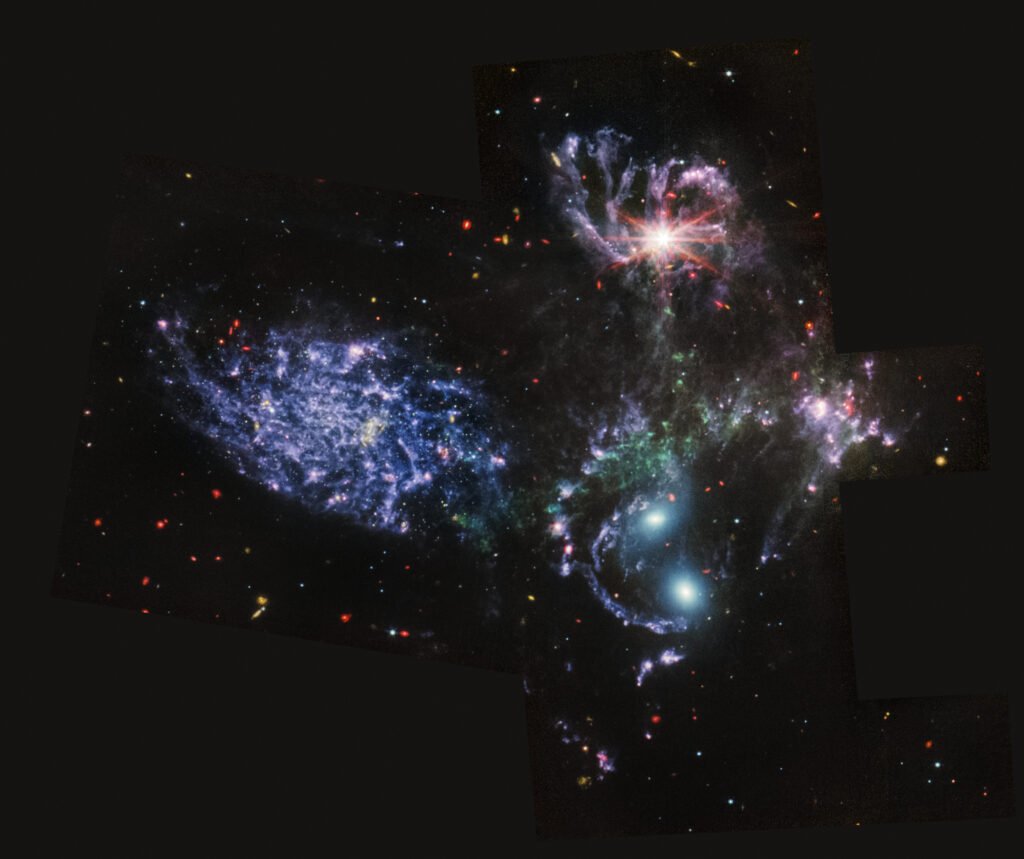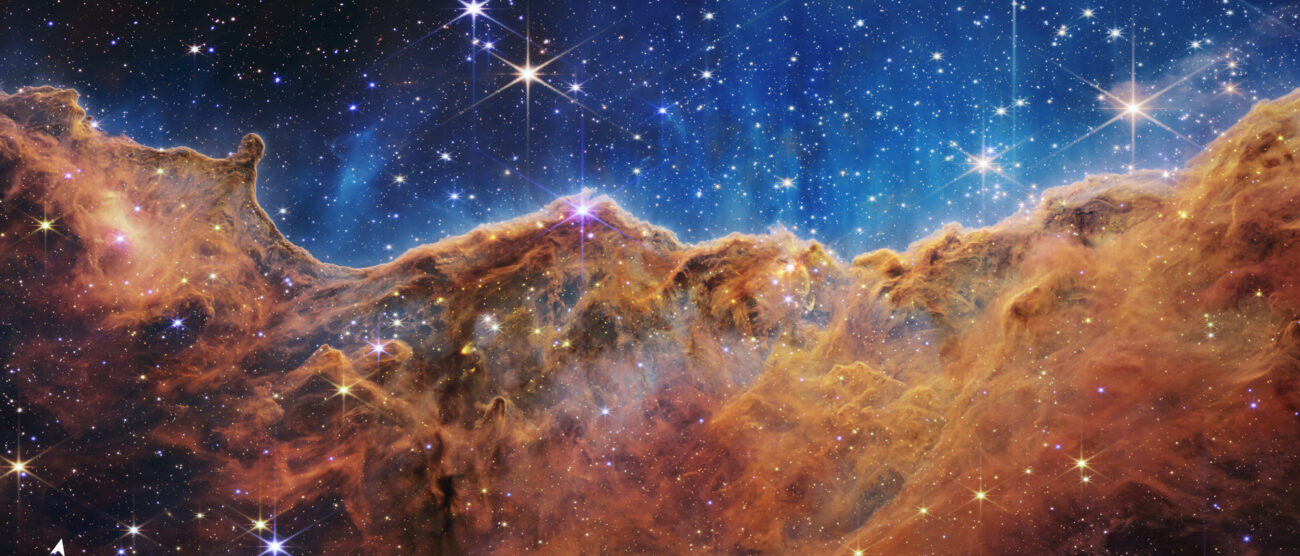L’attesa annunciata, le dita incrociate, qualche test e poi le prime immagini dallo spazio: quelle restituite alla Terra dal James Webb Space Telescope, che martedì 12 luglio, al termine di un countdown di una settimana, ha svelato agli uomini quello che (quasi) finora avevano solo immaginato.
C’è anche un po’ di Brianza dietro le quinte del telescopio più ambizioso e più potente che sia mai stato spedito nell’universo da un progetto che unisce le forze di Nasa (Stati uniti), Esa (Europa) e Agenzia spaziale canadese (Csa): Camilla Pacifici, astrofisica di 37 anni cresciuta tra Monza e Vedano che oggi lavora a Baltimora e ha partecipato alla realizzazione di quello che in sigla è JWST.
L’universo, Monza e Camilla Pacifici
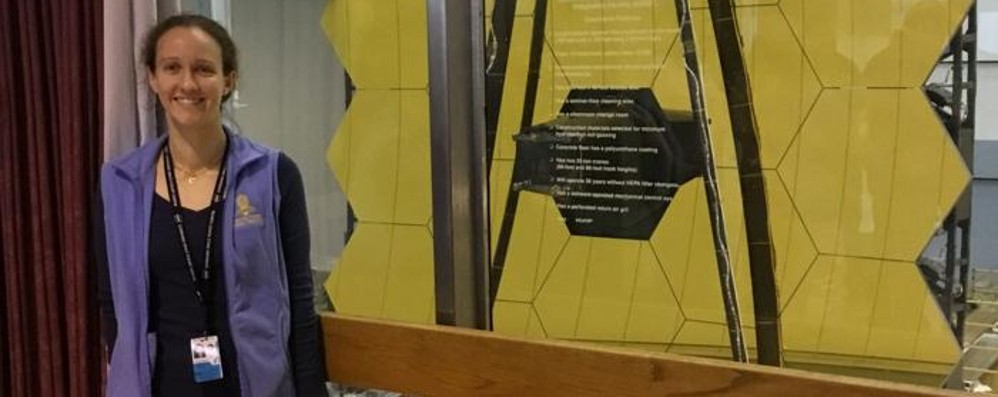
«Le scoperte che ora non possiamo neanche immaginare rivoluzioneranno l’astronomia. JWST ha strumenti senza precedenti per rilevare pianeti extrasolari e studiarne le atmosfere. Magari si scopriranno altri pianeti che possono ospitare la vita» aveva detto Camilla Pacifici a gennaio, a una settimana dal decollo del telescopio, e non scherzava: il mondo dell’astrofisica e della scienza, di fronte all’enormità dell’universo, dà per scontato che ci siamo molte più probabilità dell’esistenza di vita extraterrestre rispetto al contrario. JWST ha raggiunto la destinazione da tempo, il punto Lagrangiano L2, un luogo ancora nel sistema solare ma dalla parte opposta al Sle dove «un satellite può mantenere una posizione stabile», a a circa 1.500.000 km dalla Terra. Da lì, una serie di calibrazioni e poi l’operatività, quella che martedì si è trasformata nelle prime, attese foto del telescopio.
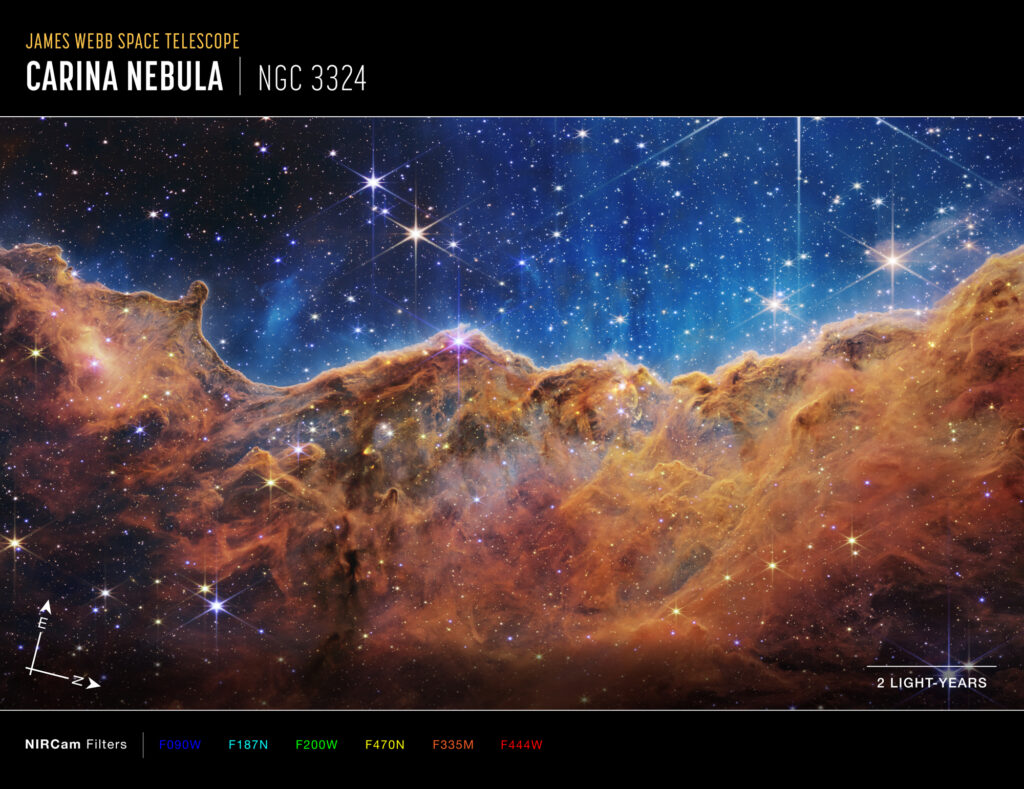
Il primo passo per avvertire la vertigine dello spazio è uno sguardo alla Nebulosa della Carena, che era già stata immortalata dai Hubble, ma ora è tutt’altro. Si trova ancora nella galassia che comprende la Terra, cioè la Via Lattea, a circa 7.500 anni luce di distanza: è ampia 260 anni luce, spiega la Nasa, e dentro si vedono i processi di nascita di nuove stelle.
Tra i fattori rilevati con più evidenza oggi ci sono le interazioni che idrogeno e polveri hanno proprio con le nuove stelle all’interno di quella che viene chiamata Montagna mistica. “La regione è in realtà il bordo di una gigantesca cavità gassosa all’interno di NGC 3324” scrive la Nasa: “L’area cavernosa è stata scavata dalla nebulosa dall’intensa radiazione ultravioletta e dai venti stellari di giovani stelle estremamente massicce, calde, situate al centro della bolla, sopra l’area mostrata in questa immagine. La radiazione ad alta energia di queste stelle sta scolpendo il muro della nebulosa erodendolo lentamente”.
Camilla Pacifici, l’universo, le Nebulose
Poi la Nebulosa Stella Sud, stelle a fine vita in cui “la coppia di stelle è bloccata in un’orbita stretta, che porta la stella più debole a spruzzare materiale espulso in una gamma di direzioni mentre orbitano l’una intorno all’altra, dando luogo a questi anelli frastagliati”. L’Agenzia Usa sottolinea grazie al progetto cui ha partecipato anche Camilla Pacifici che si notano “centinaia di linee diritte e ben illuminate attraversano gli anelli di gas e polvere. Questi riflettori emanano dalla stella luminosa e scorrono attraverso i buchi della nebulosa come la luce solare attraverso le fessure di una nuvola. Ma non tutta la luce delle stelle può sfuggire. La densità della regione centrale, evidenziata in verde acqua, è riflessa da quanto sia trasparente o opaca. Le aree verde acqua più profonde indicano che il gas e la polvere sono più densi e la luce non è in grado di liberarsi”.
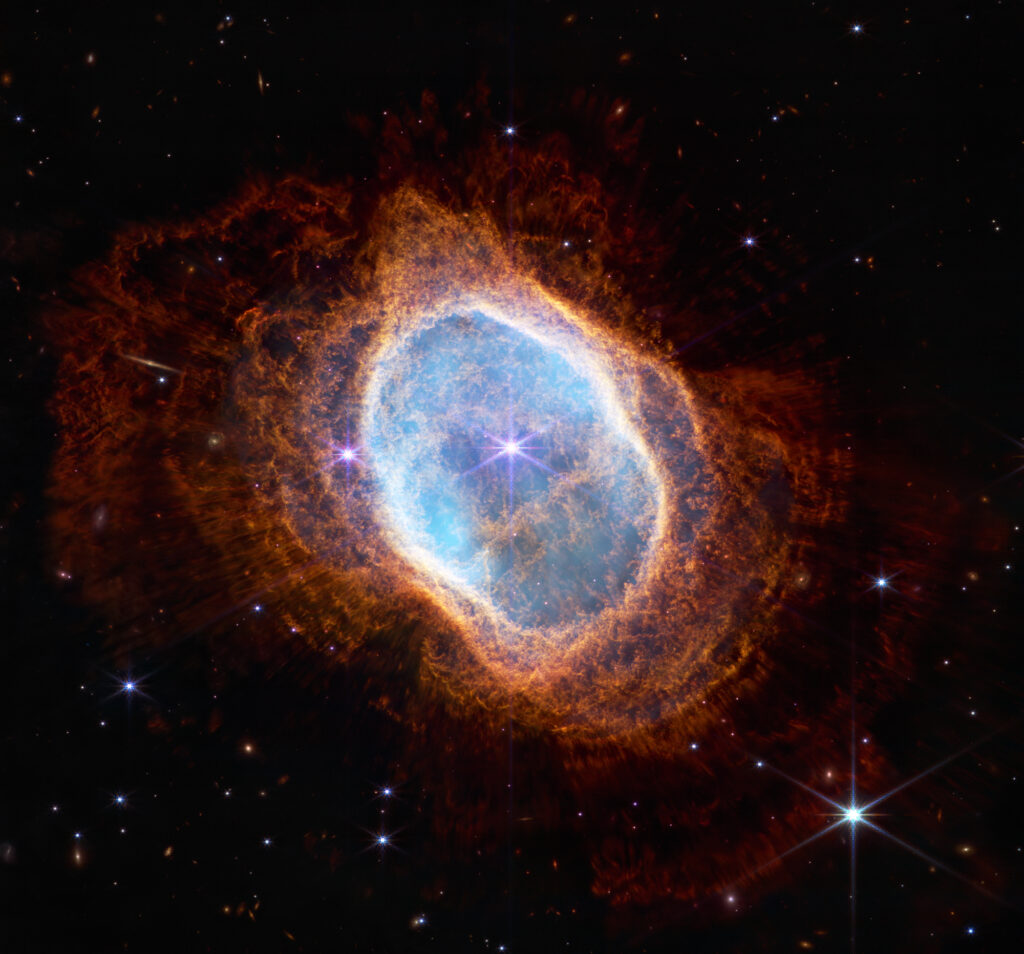
Poi il Quintetto di Stephan, un gruppo di cinque galassie di cui quattro si trovano vicine e un quinto è meno remoto dalla Terra. “In questa immagine, il rosso indica regioni polverose che formano stelle, nonché galassie primitive estremamente distanti e galassie avvolte da polvere densa. Le sorgenti puntiformi blu mostrano stelle o ammassi stellari senza polvere. Le aree diffuse di blu indicano la polvere che ha una quantità significativa di grandi molecole di idrocarburi.
Per le piccole galassie di fondo sparse nell’immagine, i colori verde e giallo rappresentano le galassie precedenti più lontane che sono anche ricche di questi idrocarburi.La galassia più in alto del Quintetto di Stephan – NGC 7319 – ospita un buco nero supermassiccio 24 milioni di volte la massa del Sole. Sta attivamente accumulando materiale ed emette energia luminosa equivalente a 40 miliardi di Soli”.
